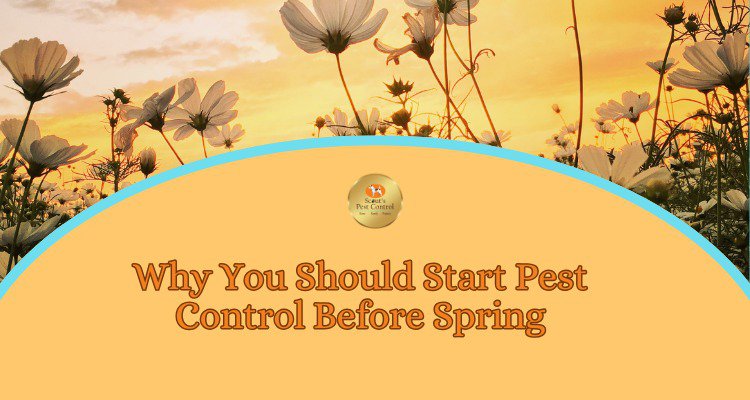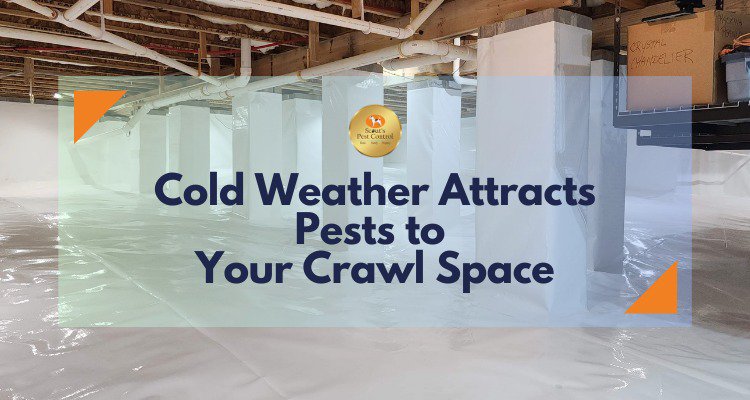Mold in the crawl space is a serious problem because it not only affects underground structures and the integrity of your home but also has an effect on your health. The sooner you understand the dangers you face and the type of mold you are exposed to, the sooner you can act and have the crawl space treated to prevent these dangers. First, we need to understand why there's a serious risk of exposure to mold in your crawl space and then what we can do about it to protect from damaging conditions and wood damaging pests.
Mold In The Crawl Space – But What Is Mold?
Fungi that grow on organic matter are called molds. Mold was first discovered in 1928 by Scottish Bacteriologist Alexander Flemming. Mold is found in moist areas like crawl spaces, basements, and barns. Other forms of organic matter, such as food, plants, and dead animals, are also where molds can grow. Some molds can have a beneficial purpose, such as the one found by Flemming. However, the ones we are concerned about are the ones that cause issues in the crawl space of your home.
Mold can spread to different parts of the house with its spores. When these spores are dispersed into the air or moved from one room to another by people, pests, or animals, they can decompose into tiny particles known as mold spores. Remember that some pests not only damage your wood and cause structural concerns but can also spread dangerous mold spores.
Mold is unpleasant to the eye and smells bad, but there are much more serious potential health problems related to mold exposure. Many people do not seem to take mold and wood rot seriously until it's too late. Even if you do not spend a lot of time in the area, mold can easily enter your home. Numerous problems are caused by improper moisture management, which is often to blame. The greatest threat comes from your crawl space and owing to the South Carolina environment which is conducive to mold growth.

In addition to the expense of remediation, mold can make the wooden structures beneath useless. Your formerly cozy home might become all but uninhabitable, and the value of your home will plummet. Furthermore, as mentioned previously, pests can be a serious problem. If your crawl space suffers from high moisture, mold, and wood rot, then you can be assured that you will have pests. Why? Because you have given them the environment they need to survive and thrive.
Dangers of mold infestation to your health
Mold spores can be extremely irritating to some people. When they inhale the spores, they may begin to wheeze or exhibit symptoms such as red/itchy eyes and skin, as well as a stuffy nose. You could suffer from worse conditions and perhaps even anaphylaxis. Check the list of the effects of mold on humans;
mold affects people differently.
- Some people may not be affected at all by mold exposure, whereas others may become ill if they come into contact with mold.
- When a person with a chronic respiratory disease, such as asthma, inhales mold, he or she may have trouble breathing.
- Anyone who has mold allergies or sensitivity is at risk. People with weakened immunity, immune suppression, or underlying respiratory diseases are also vulnerable to fungal infections.
- Mycotoxicosis, or mold poisoning, is another health concern. Nausea, giddiness, drowsiness, twitching, convulsions, and prolonged sleepiness are all warning signs.
Different types of molds and wood rots and their dangers to your home

Crawl spaces are prone to both wood rot and mold growth, especially if they have an inherent moisture issue. This could be down to lack of a French drain, high humidity, and nowhere for moisture to be removed from the ground and from the air.
A wood rot infestation appears as decaying, damaged wood. In contrast, a mold infestation will appear as discoloration. It can be black, white, yellow, or in a variety of colors.
Musty odors and patches of white powdery substances on floor joists or beams are all signs of rot and mold, and as long as your crawl space remains humid and damp. You will continue to get problems that will get worse over time. Let’s look at the types of mold you could come in contact with within your crawl space.
MOLD
White mold: This frequently develops on damp floor joists and exposed soil, and despite its color, this mold is just as dangerous as black mold and can produce toxins, so you should treat it the same way. Although it is less invasive, allergies could still result from it.
Black mold: It is thought to be the most toxic type. Black mold comes in two varieties, both of which produce mycotoxins, which can cause allergies or aggravate existing respiratory problems like asthma. They have a bumpy, fluffy, or powdery appearance and can be dark gray or greenish. Black mold causes allergies and worsens existing respiratory problems. Even a minor exposure is hazardous to your health.
Yellow mold: This type feeds on organic materials such as wood, causing them to decay and weaken over time. Remove it as soon as you notice it because it will cause damage to your home.
WOOD ROT
Brown Rot: It is sometimes called dry rot because the infected wood eventually dries out and crumbles. When a certain type of fungus invades the wood and destroys the cellulose, brown rot develops. As a result, the wood cracks over time and eventually splits.
White Rot: It is the most aggressive of the three types of rot, and once the wood is affected, decay proceeds rapidly. In white rot, the cellulose in the wood is damaged. It also damages the lignin in the wood, resulting in white patches or, in more severe cases, a sickly pale color throughout the wood. White rot also causes the wood to feel soft and/or spongy.
Soft Rot: Frequently, it begins deep inside the wood's inner cavities. The least common type of wood rot, soft rot, typically develops in environments that are too hot, too cold, or too moist for brown or white rot.
HOW TO GET RID OF IT?
You have no choice but to take preventative measures to make sure that mold doesn't spread or take over your crawl space, given how dangerous it is to the structure of your home and of course – your health. The first step is identifying the cause of the increased moisture that makes the conditions conducive and then taking the appropriate action. That starts with having your crawl space inspected properly.
Removing the moisture by installing a French drain, adequate ventilation through the installation of a dehumidifier, and then full crawl space encapsulation. Encapsulation of the craw space ensures the conditions do not exist for wood rot and mold.
WHAT IS ENCAPSULATION?
Crawl space encapsulation involves protecting the interior of the crawl space with a vapor barrier. The barrier is usually applied to the floor coverings and walls. It successfully prevents moisture from entering or accumulating in this area. When done correctly, the encapsulation keeps the inside of the crawl space dry and clean by insulating it from the aggressive elements outside. Furthermore, this negates the conditions necessary for pest survival.
Why Encapsulate a Crawl Space?

You might be breathing in dust, toxic mold, dangerous soil gases, and excessive moisture levels because the air from a crawl space invariably leaks into the interior of your home. You can improve the quality of the airflow into your property and stop these elements from entering your living spaces by encapsulating your crawl space and installing a dehumidifier at the same time.
- Crawlspace encapsulation can protect both the structure of your property and your health. If it is left untreated, this could compromise the integrity of the structure and even make the property unsafe. The risk of structural damage is greatly reduced because encapsulation ensures a suitable humidity level is achieved.
- A properly treated craw space will deter wildlife and pests since the conditions for survival do not exist. Insects and other pests are less likely to chew on your furniture or the wooden structures in the area under your home if you enclose your crawl space since it will make it less attractive to them.
- Enclosing your crawl space allows you to store your old belongings there instead of having to store them in your garage or pile them up elsewhere.
- The need for repairs is reduced by encapsulation. You will save a lot of money that would have been spent on repairing frayed cables, rusty pipes, and weak beams. Also, it can help restore the structural integrity of your home and extend its useful life.
SCOUTS PEST CONTROL FOR ENCAPSULATION AND MOLD REMOVAL
Crawl space encapsulation can save you a lot of money on energy costs and repairs. Calling the right experts to come and make it happen for you will ensure that you get the crawl space clean and safe from molds. Of course, this starts with a thorough crawl space inspection, and we carry out an incredibly thorough inspection, often picking up issues that many others will miss. The beauty of this inspection is that we offer it totally free of charge to the homeowner.





